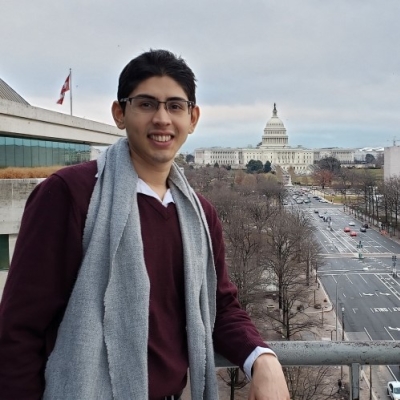What can be done to rescue failing schools? This perennial question is facing districts across the nation, from Houston to Providence. What’s worse is that persistently underperforming schools tend to be concentrated in urban, high-poverty areas and affect students of color the most. The Obama Administration even devoted billions of federal dollars towards supporting turnaround efforts in the last decade, but a 2017 Institute of Education Sciences report found that it bore little fruit. This led Professors Jennifer B. Ayscue and Genevieve Siegel-Hawley to conduct their recently published case study on the effectiveness of using federal funds to create magnet programs designed to increase the diversity and achievement of struggling schools.
They focus on recipients of the federal Magnet Schools Assistance Program (MSAP), which operated under the School Improvement Grants (SIG) framework. MSAP’s goals were to promote desegregation in public schools, offer innovative educational methods that increase choice, and offer students challenging academic content in federally-funded magnet programs created within schools identified as being in need of turn-around. These magnet programs existed within the otherwise common schools, and only a subset of students participated in them. The researchers note that while most turn-around programs under SIG relied on funding charters, this one had an explicit focus on desegregating traditional public schools.
Ayscue and Siegel-Hawley selected three schools on which to do a case study. Each of these met four criteria: (1) they were identified by the federal government as requiring improvement, restructuring, or corrective action under No Child Left Behind; (2) they received MSAP funds and used them to create a magnet program inside their buildings that a subset of students would participate in; (3) they increased the diversity of their entire schools, not just in their magnet programs, as determined by district-level enrollment data mapped against district trends; and (4) they increased math and reading achievement according to self-reported MSAP documentation, again in the entire school, not just in their magnet programs.
The three they selected—Maple (Pre-K–8), Palm (6–8), and Bayside (K–8) (the authors don’t further identify them)—reduced segregation by at least 10 percent, and improved achievement in one or both subjects. Maple implemented an environmental sciences magnet program, and saw schoolwide reading and math achievement improve overall (though Hispanic students did worse in math) and its white and Asian enrollment increase from 8 to 33 percent. Palm centered its magnet program around arts and technology, and also saw improvements in both subjects (though Hispanic outcomes remained flat) and its white and Asian enrollment jump from 15 to 33 percent. And at Bayside, which adopted an International Baccalaureate (IB) program for its magnet, math and reading achievement increased overall and all subgroups saw math gains (but, similar to the other two schools, the reading scores of Hispanic students stayed flat), and its white and Asian enrollment went from 17 to 40 percent.
Ayscue and Siegel-Hawley’s team then attempted to draw lessons from the three schools that could be useful to others, examining whether there were any broad, shared themes that may have contributed to their success, as well as any shared challenges. They used, among other information, the results of focus groups, semi-structured interviews with administrators, teachers, and parents, and unstructured observations during class, lunch, and recess. They identified two common characteristics that facilitated greater diversity and achievement, and a set of common challenges.
They found that the focus of the magnet programs, their recruitment efforts, and lottery-based competitiveness improved family interest and school enrollment. For instance, Maple hired a full-time marketing staff person and went from 150 to 600 students, and Bayside found that the rigor and rarity of the IB program was a main attraction for white families.
Second, each made notable changes to their school cultures and instructional practices. They, for example, mixed magnet and not-magnet students in classes and group activities, and Bayside hired all new teachers for their IB program and invested heavily in teacher training.
Finally, all three schools struggled to get teachers to buy in to new methods, to get parents of color involved, and to equitably identify new students as gifted. Black and Hispanic parents felt there weren’t enough peers of color at PTA meetings, and principals reported more tension with teachers over the school vision, with many retiring early or leaving the school. Bayside and Palm also reported relying on counselor interviews and less on test scores when identifying gifted students of color, but still found they were underrepresented.
The policy takeaway that Ayscue and Siegel-Hawley offer is that districts should consider magnet programs more as a strategy for turn-around rather than closing underperforming schools, which could also improve collaboration between local, state, and federal government to improve outcomes.
The case studies show that educational excellence is attractive to families of every stripe, but also that it requires buy-in from the entire community. They also show that school choice can and should work in multiple ways, and when done right, can increase both diversity and achievement. Nonetheless, further studies are needed to see whether these results are scalable. The changes that transformed these schools’ cultures and made the turn-around efforts successful—e.g., improved data collection, good discipline practices, engaging and challenging magnet programs, etc.—are exceptional and costly, but certainly desirable.
SOURCE: Jennifer B. Ayscue and Genevieve Siegel-Hawley, “Magnets and school turnarounds: Revisiting policies for promoting equitable, diverse schools,” Education Policy Analysis Archives (2019).

